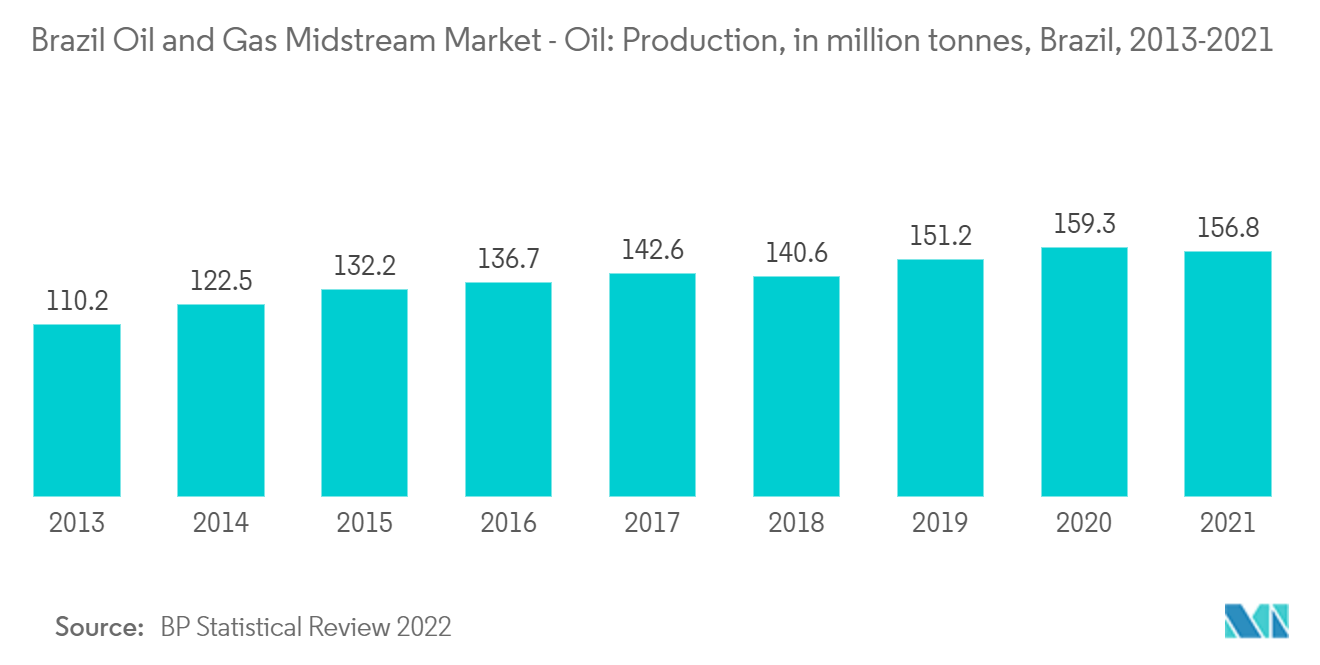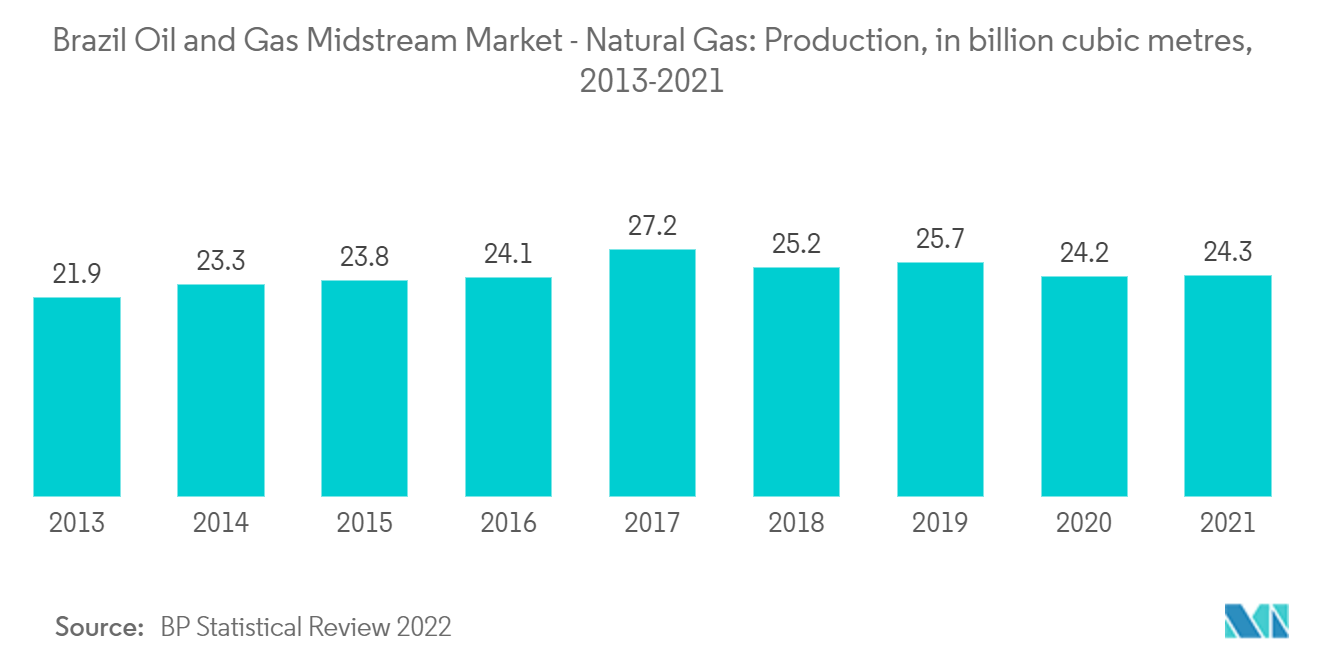Market Trends of Brazil Oil and Gas Midstream Industry
Transportation as a Significant Segment
- The pipeline is a significant means of transportation for natural gas, crude oil, and oil products. In Brazil, pipelines act as a substantial mode of transportation for natural gas. Brazil installed its natural gas pipelines due to domestic oil and gas field developments and natural gas imports from Bolivia.
- In August 2022, according to CEO Cynthia Silveira, the Transportadora Gasoduto Bolívia-Brasil (TBG) of Brazil was expected to issue a public call for more gas transportation capacity by the end of the year 2022.
- Further, Brazil produced about 3.7 million barrels of oil equivalent and 131,325 thousand cubic meters of gas per day, according to data from the Brazilian National Agency of Petroleum, Natural Gas, and Biofuels (ANP) from May 2022. Brazil presently ranks seventh globally in terms of daily oil barrel production, and within ten years, it is anticipated to produce more than 5.3 million barrels per day.
- Brazil's oil production decreased by 1.56% in 2021. In 2021, the natural gas production was 156.8 million metric tons, compared to 2020, which was 159.3 million metric tons.
- In mid-2022, a division of the Brazilian Ministry of Energy, the Energy Research Company (EPE), published the "Transport Gas Pipeline Plan 2022-2026" (PIG), which served as a guide for investments in gas pipeline construction throughout the country. In the 2022-26 plan, there are five gas pipeline routes that will be constructed, primarily to carry gas from the Sergipe and Alagoas basins as well as pre-salt gas. The document indicates that USD 4 billion will be invested to fund the construction of each pipeline.
Due to the above points, the midstream sector is also expected to increase during the forecast period along with the transportation sector.

Growing Pipeline Infrastructure to Drive the Market
- Brazil accounted for about 2.9 million barrels per day of crude oil production and was the tenth-largest oil-producing country in the world in 2021. According to the United States Energy Information Administration (EIA), more than 90% of Brazil's oil production is extracted from deep-water oil fields offshore. According to the EIA, Brazil had 12.7 billion barrels of proven crude reserves in 2021, the second largest in South America after Venezuela.
- Around 30 offshore oil & gas projects are expected to start across the region by 2023, which requires a cumulative greenfield investment of around USD 50 billion. These projects are operated by a mix of national oil companies (NOCs) and major independent companies.
- As of 2021, Brazil was the major country in South America regarding oil & gas spending. The country's offshore pre-salt oil fields pumped around 50% of the total oil output, and this share increased to approximately 75% by the end of 2020. This increasing production and dependency on offshore oil & gas fields could be attributed to steadily decreasing production expenses due to improved drilling technology, growing expertise in the offshore oil & gas industry, and increased infrastructure.
- Petrobras, the country's national oil company, has an extensive natural gas pipeline network of around 9000 km. Apart from the existing pipeline, 11 gas pipeline projects have been announced or outlined by companies operating in the country in recent years. The announced projects make up over 1900 km of new pipelines in pipeline extensions, offshore pipelines, etc. In August 2021, Brazil started negotiations with Argentina to construct a 1430-kilometer-long pipeline exporting gas from Vaca Muerta reserves at an estimated cost of nearly USD 4.9 billion. Such projects are expected to provide an opportunity for the country's midstream oil & gas sector.
- In January 2022, ONGC Videsh Ltd., the overseas investment arm of the state-owned Oil and Natural Gas Corporation (ONGC), entered the development stage of production on its deep offshore block BM-SEAL-4, Brazil, located in the Sergipe Alagoas Basin. Brazil's Petrobras is the operator of the block with 75% participating interest (PI), while ONGC Videsh Ltd. holds the remaining 25% stake. The block development module of Petrobras envisages the installation of a shared floating production storage and offloading (FPSO) facility and a gas pipeline.
- Brazil's natural gas production increased by 0.7% in 2021. In 2021, the natural gas production was 24.3 billion cubic meters, compared to 24.2 billion cubic meters in 2020.
- Owing to the above points, growing pipeline infrastructure is anticipated to drive the Brazil oil and gas midstream market during the forecast period.

